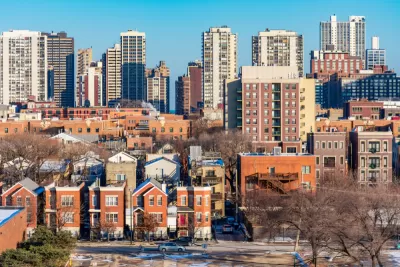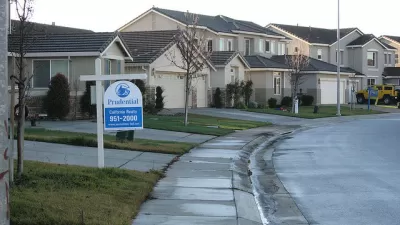A new study examines mortgage lending practices in racially homogenous neighborhoods for clues about how those neighborhoods differ from the aggregate, national market.

A new study, available online, examines the racial contours of the U.S. subprime lending boom, foreclosure crisis, and recovery surrounding the Great Recession.
"Existing studies reveal general lending patterns in these periods but fail to scrutinize racially homogeneous neighborhoods where outcomes often diverge from aggregate trends," writes author Tyler Haupert, a graduate student at Columbia University, in the abstract to differentiate the study from previous research.
The study uses data from 2005 and 2015, and finds a commonality to the pre-recession market and the post-recession market: "the gap between white borrowers’ comparatively high application approval rates and minority borrowers’ lower approval rates grows as the proportion of white residents in a target neighborhood increases."
The big takeaway: the racially homogenous neighborhoods function differently than the aggregated experience of the housing market.
The study is available in its entirety online, published by the Housing Policy Debate journal.
FULL STORY: Racial Patterns in Mortgage Lending Outcomes During and After the Subprime Boom

Alabama: Trump Terminates Settlements for Black Communities Harmed By Raw Sewage
Trump deemed the landmark civil rights agreement “illegal DEI and environmental justice policy.”

Planetizen Federal Action Tracker
A weekly monitor of how Trump’s orders and actions are impacting planners and planning in America.

The 120 Year Old Tiny Home Villages That Sheltered San Francisco’s Earthquake Refugees
More than a century ago, San Francisco mobilized to house thousands of residents displaced by the 1906 earthquake. Could their strategy offer a model for the present?

BLM To Rescind Public Lands Rule
The change will downgrade conservation, once again putting federal land at risk for mining and other extractive uses.

Indy Neighborhood Group Builds Temporary Multi-Use Path
Community members, aided in part by funding from the city, repurposed a vehicle lane to create a protected bike and pedestrian path for the summer season.

Congestion Pricing Drops Holland Tunnel Delays by 65 Percent
New York City’s contentious tolling program has yielded improved traffic and roughly $100 million in revenue for the MTA.
Urban Design for Planners 1: Software Tools
This six-course series explores essential urban design concepts using open source software and equips planners with the tools they need to participate fully in the urban design process.
Planning for Universal Design
Learn the tools for implementing Universal Design in planning regulations.
Clanton & Associates, Inc.
Jessamine County Fiscal Court
Institute for Housing and Urban Development Studies (IHS)
City of Grandview
Harvard GSD Executive Education
Toledo-Lucas County Plan Commissions
Salt Lake City
NYU Wagner Graduate School of Public Service





























